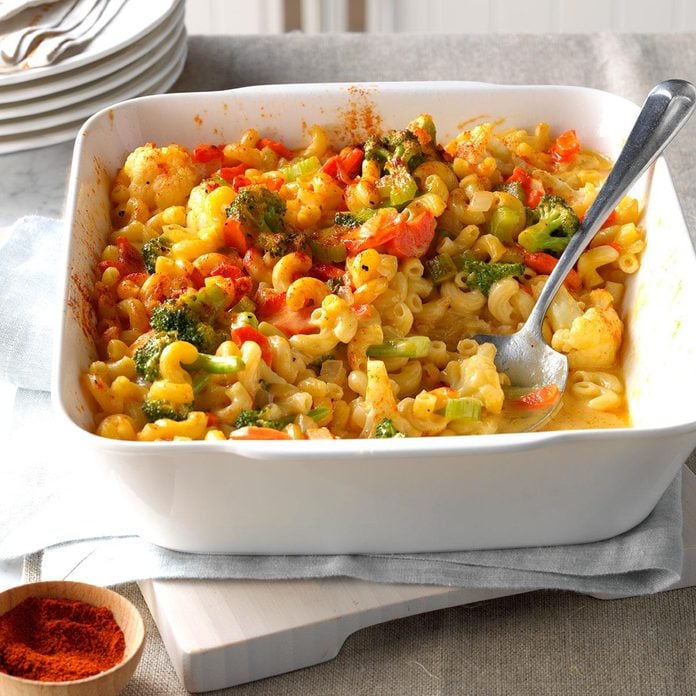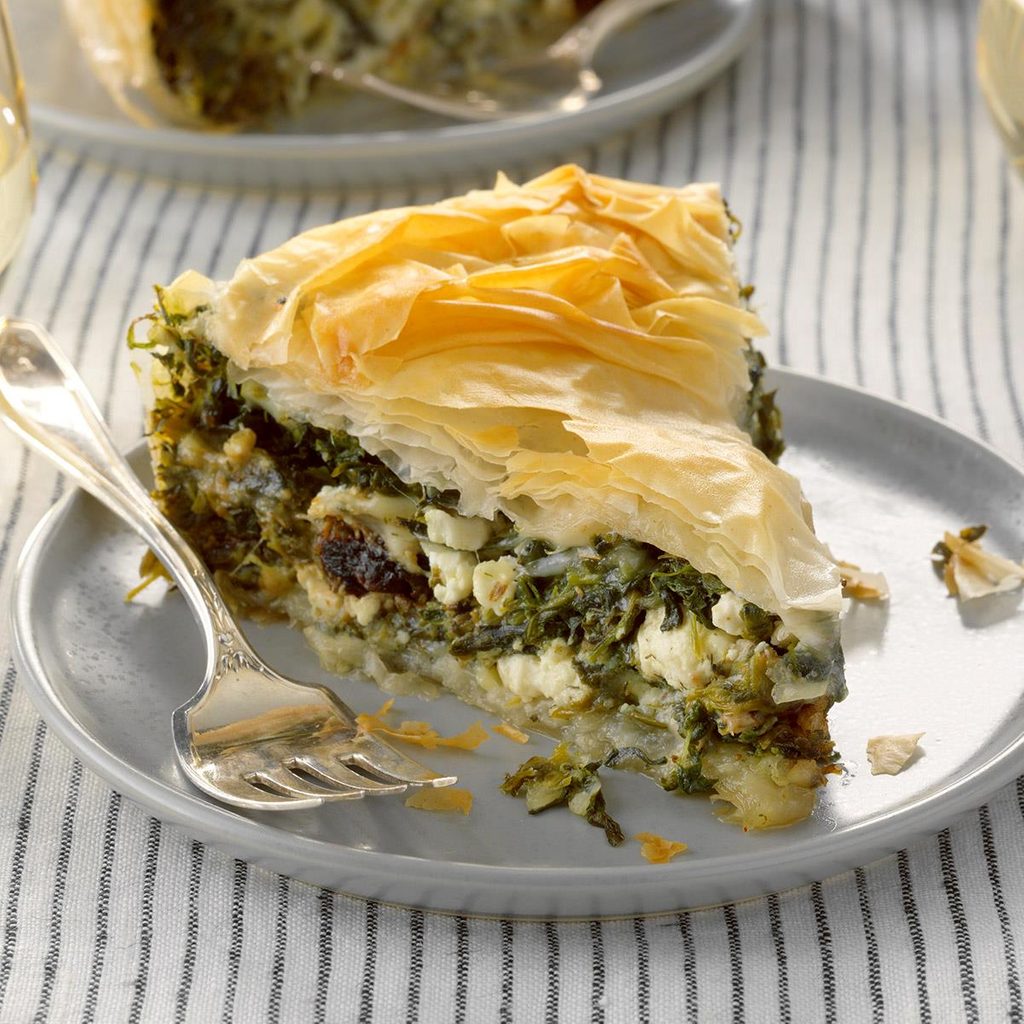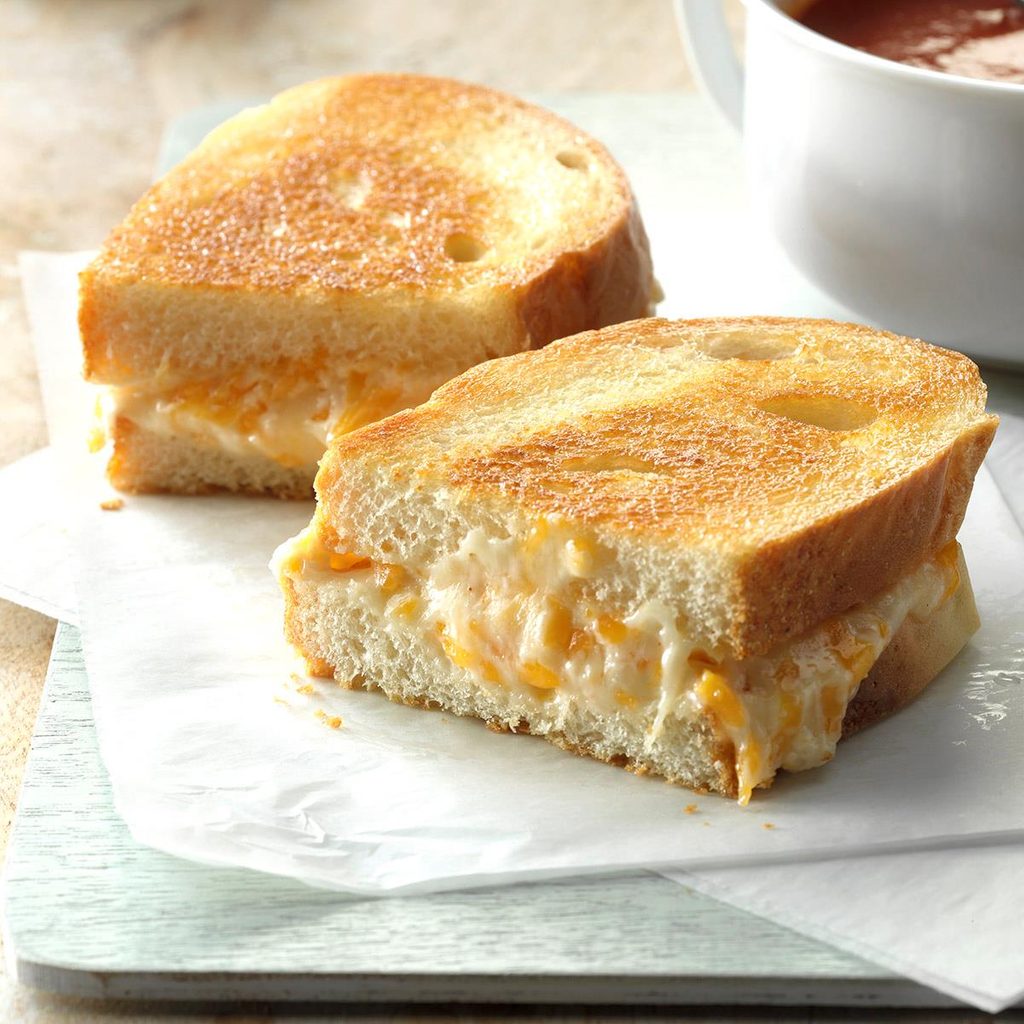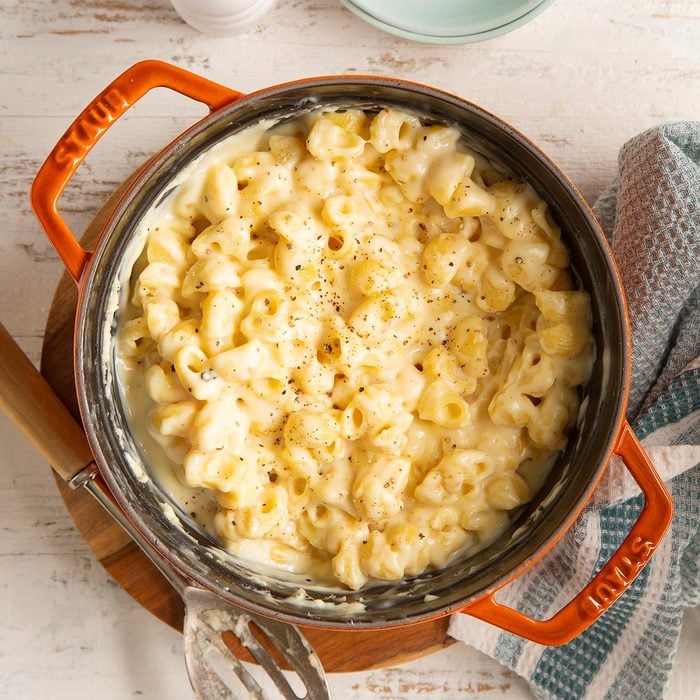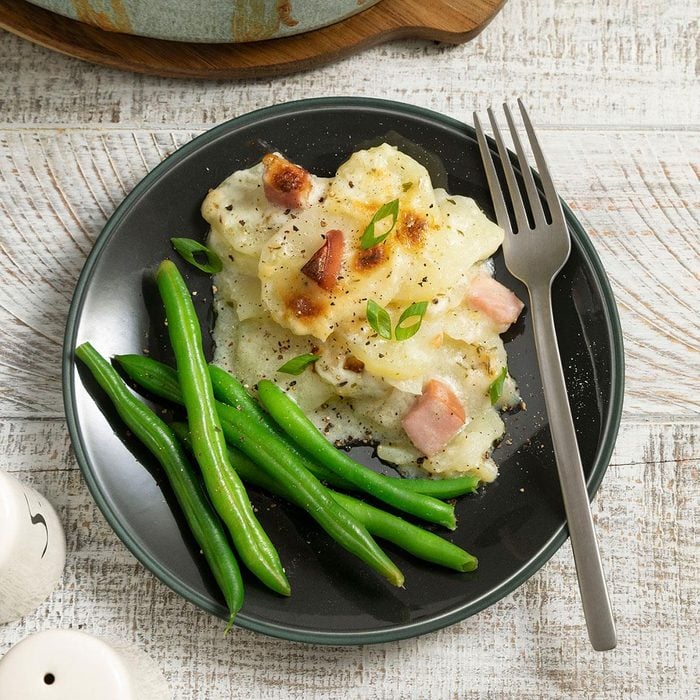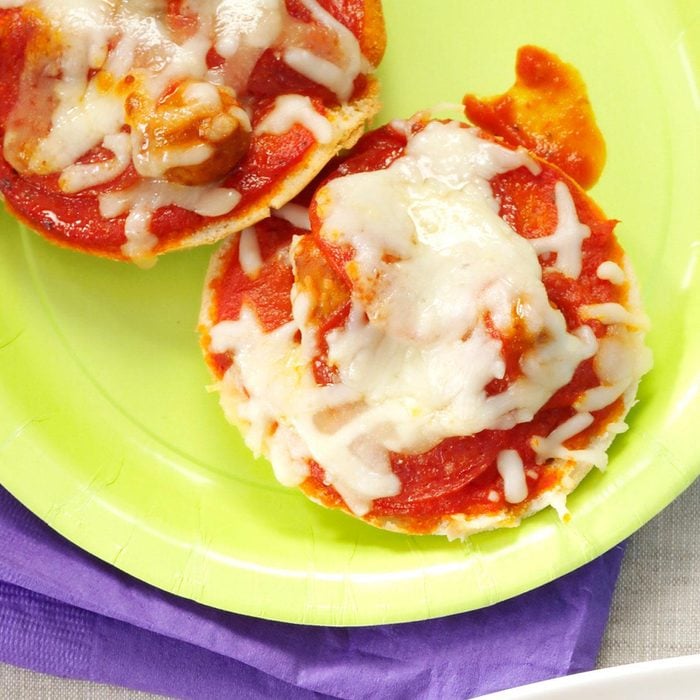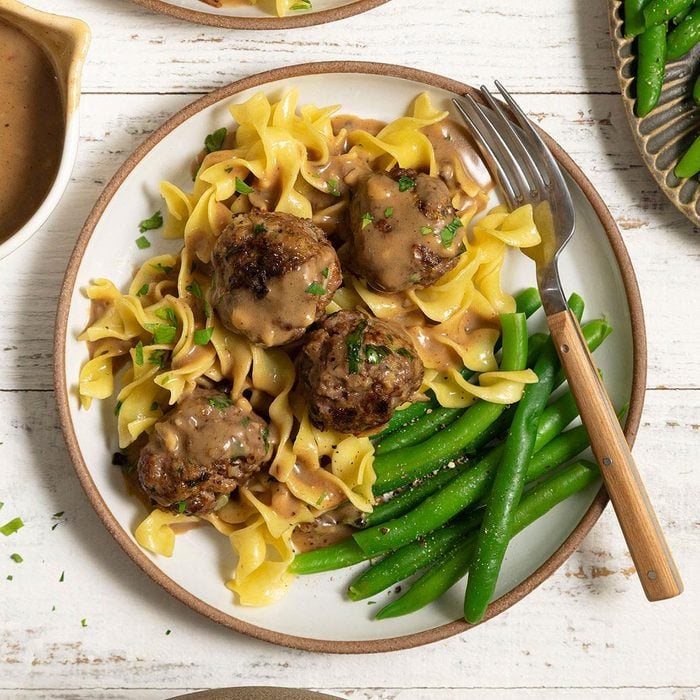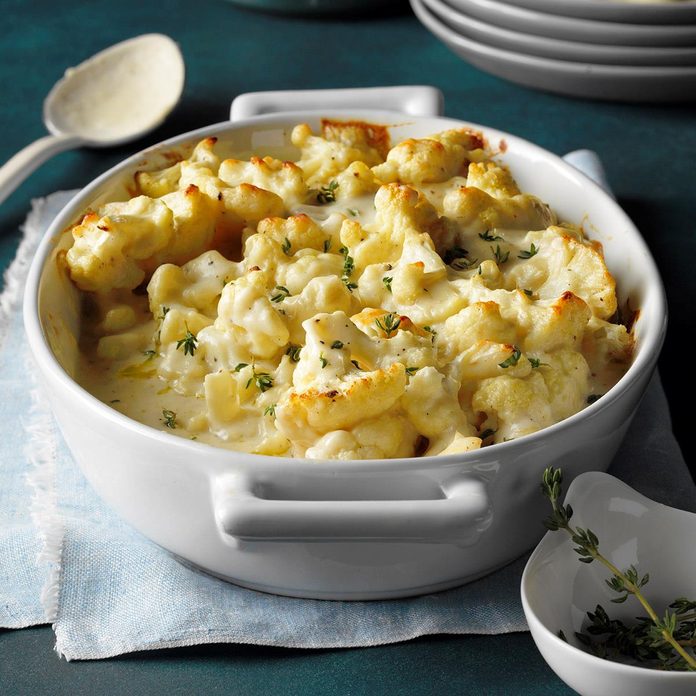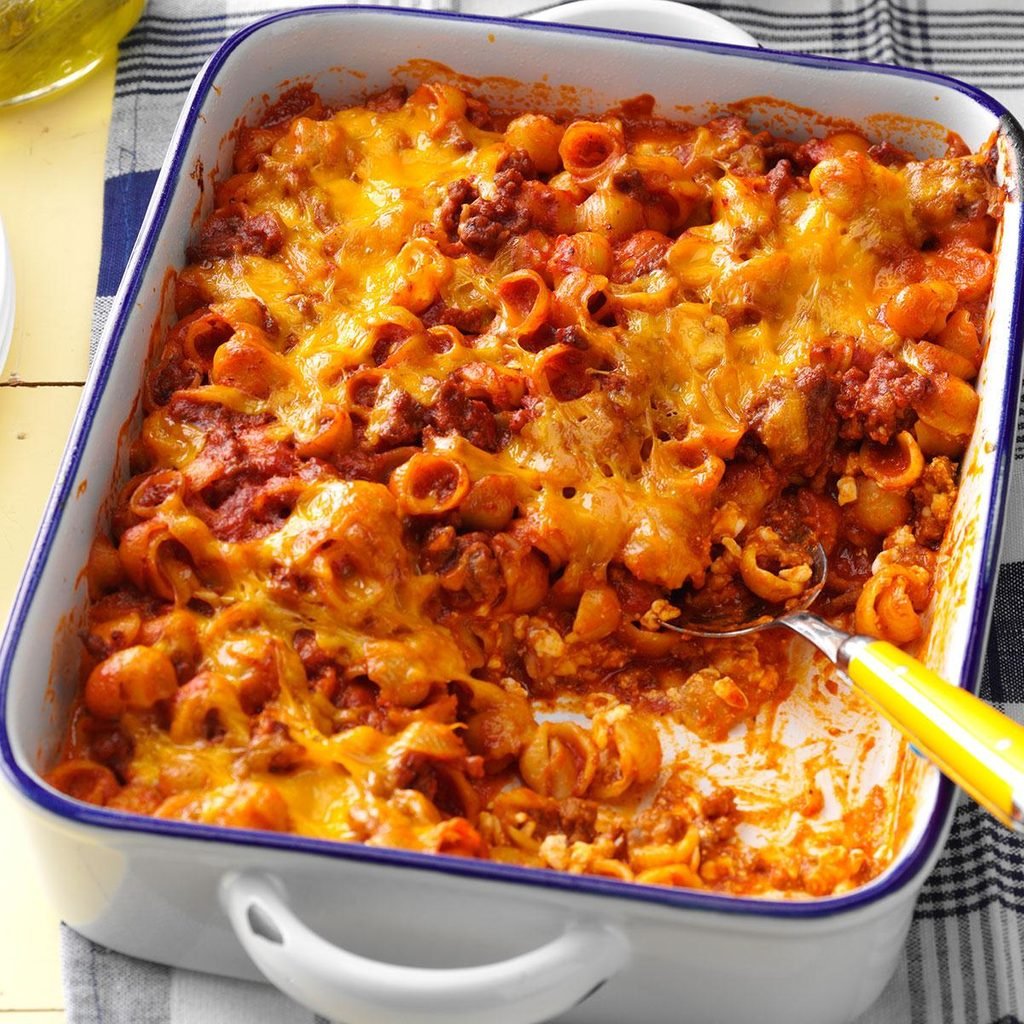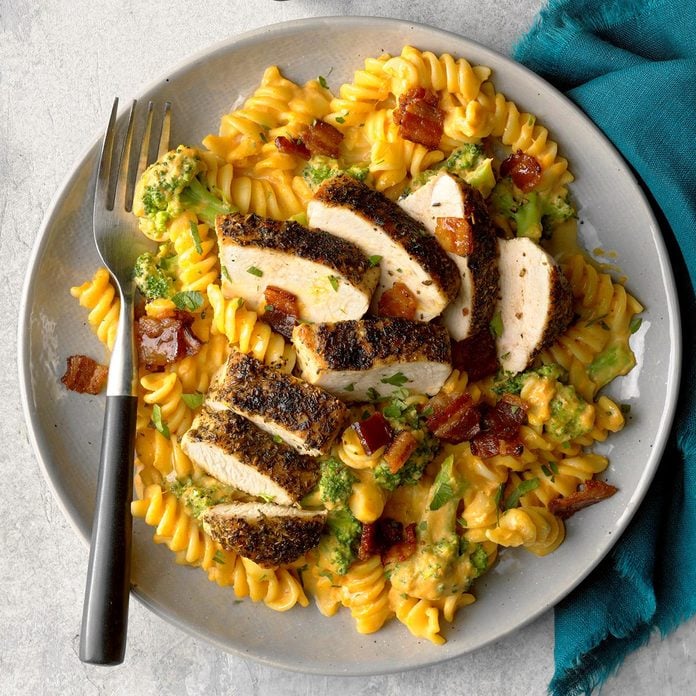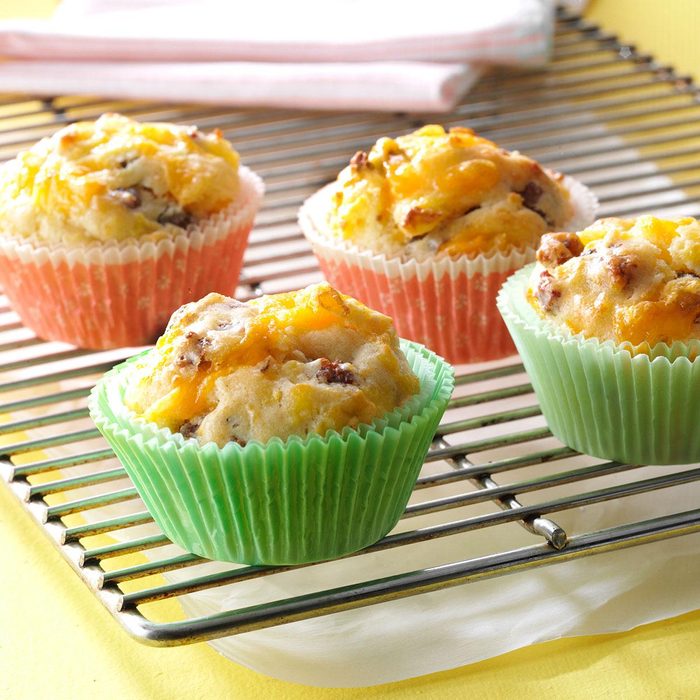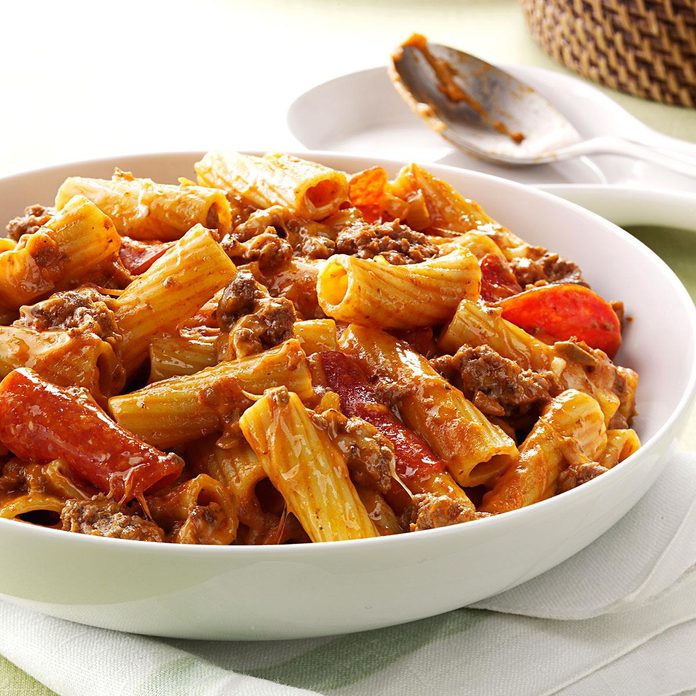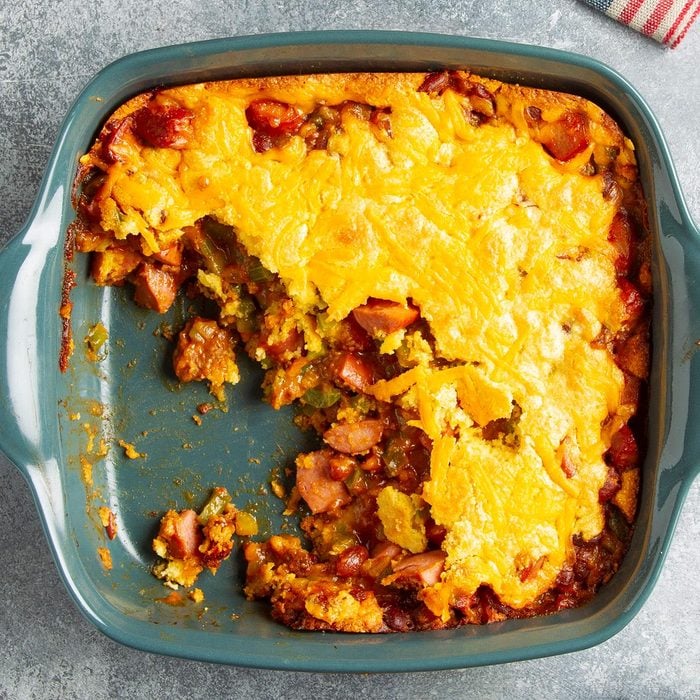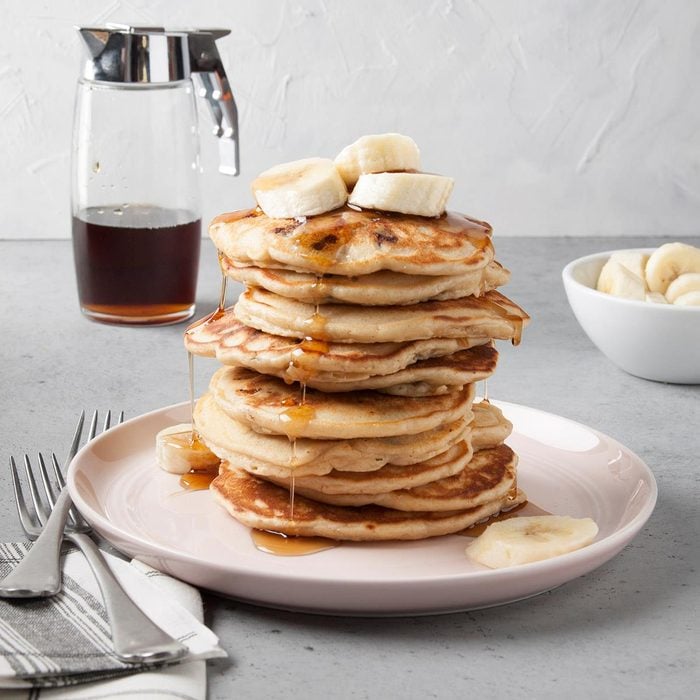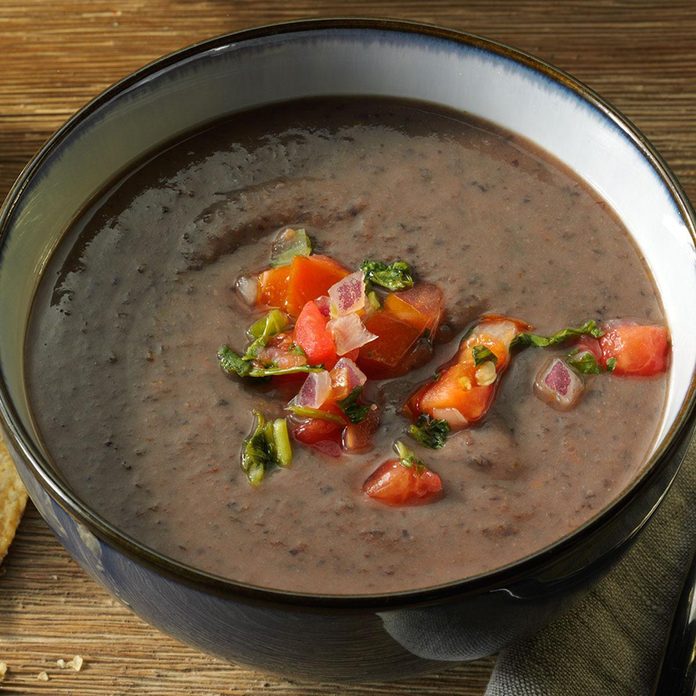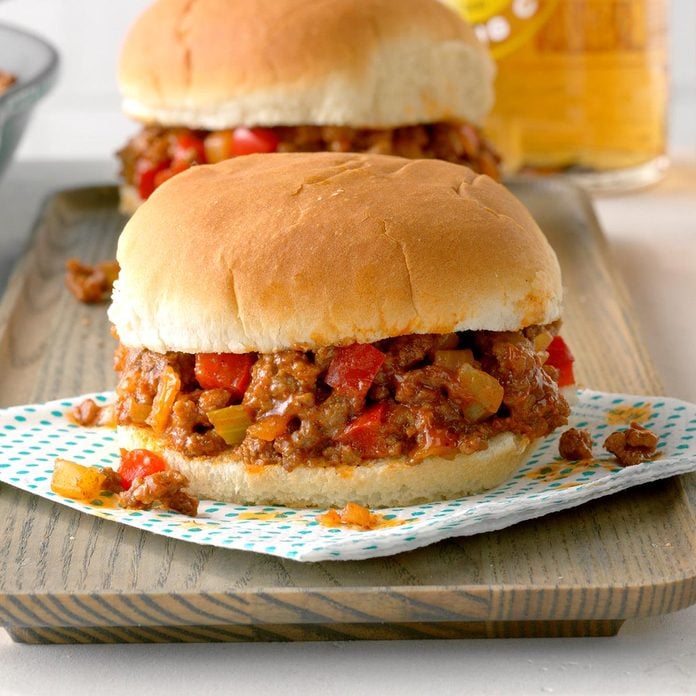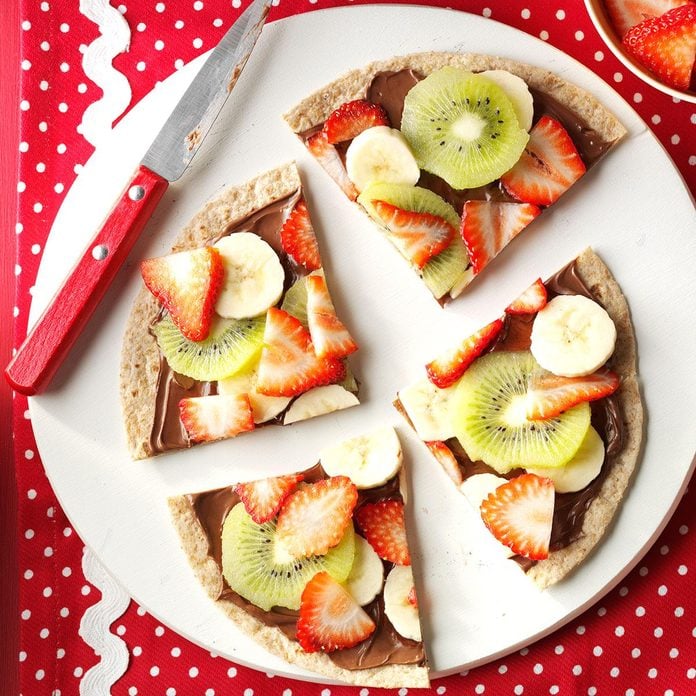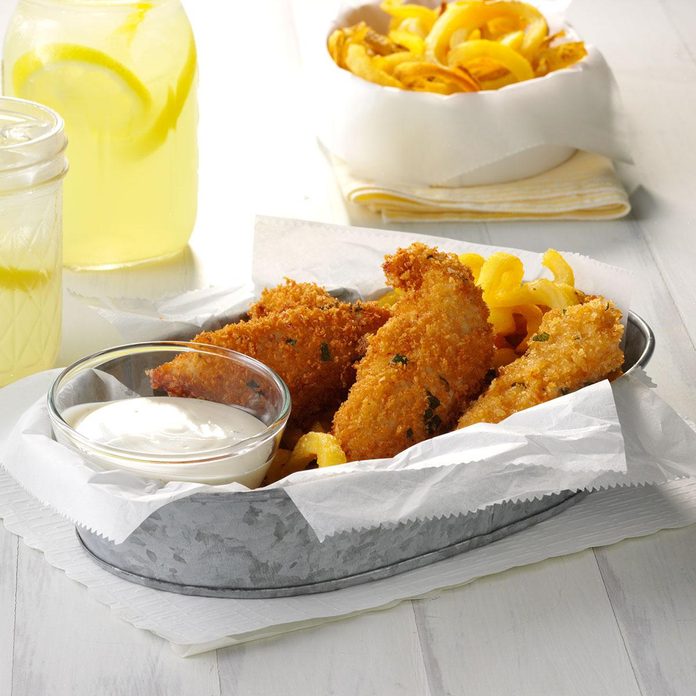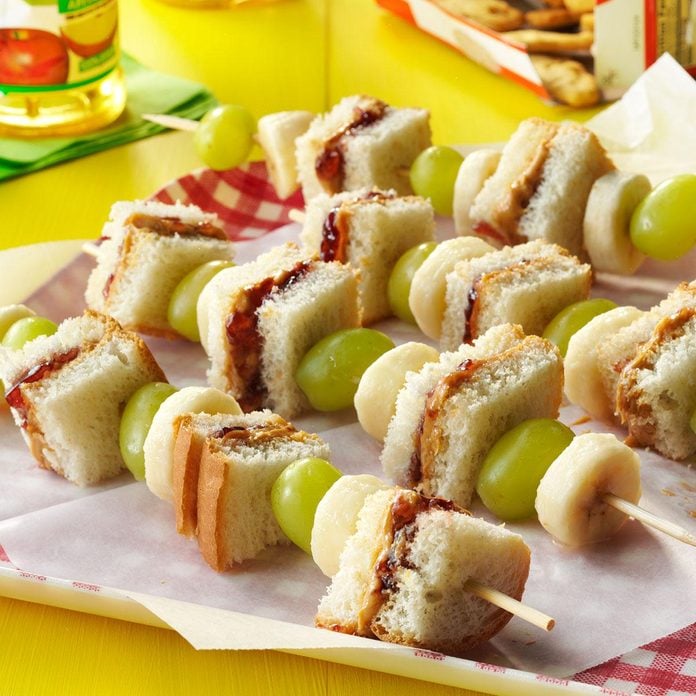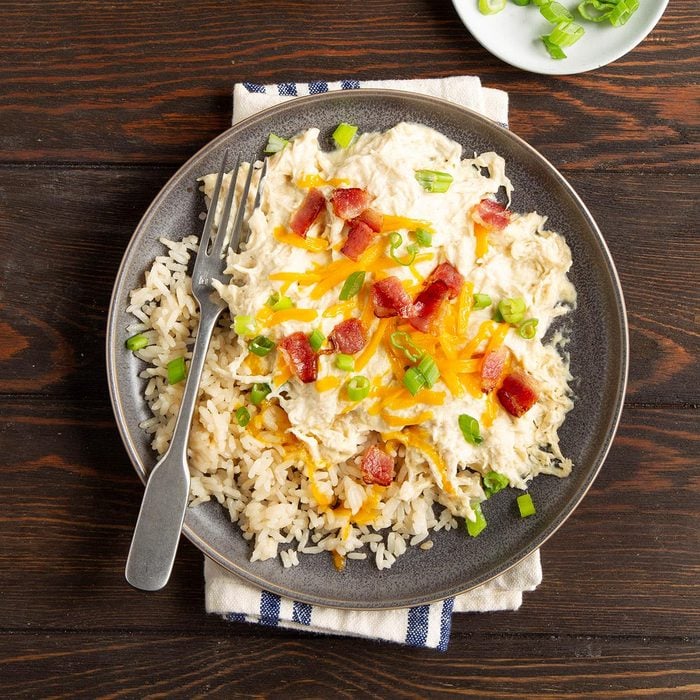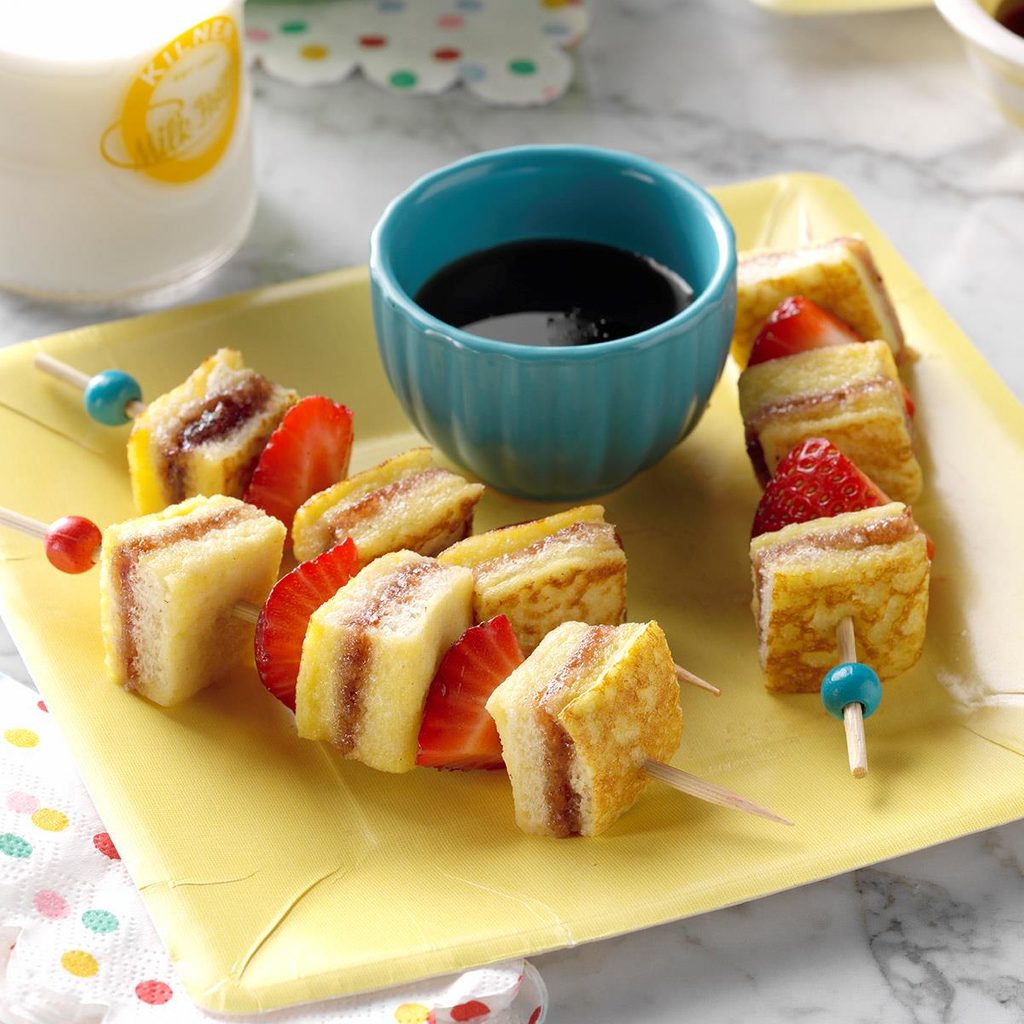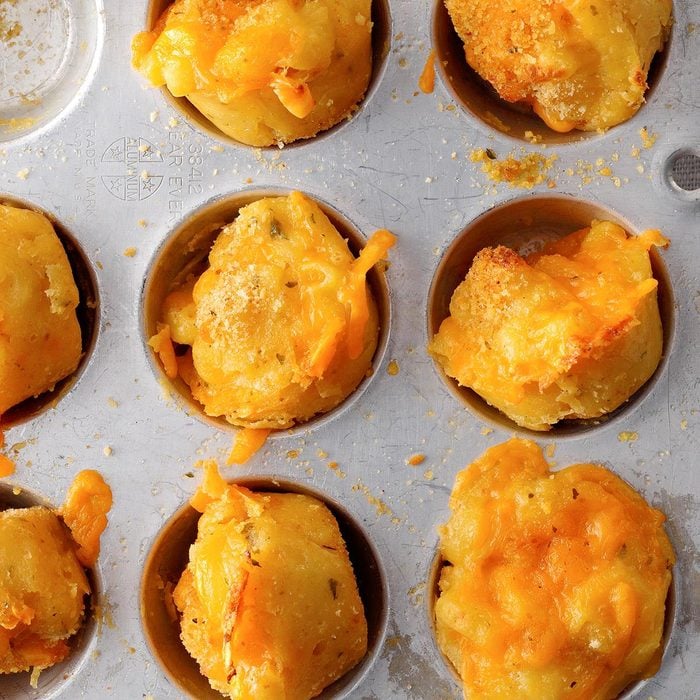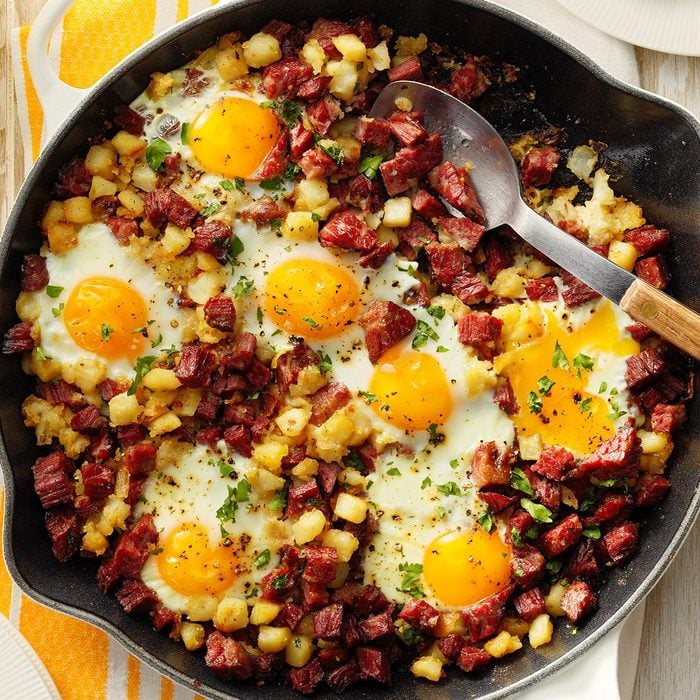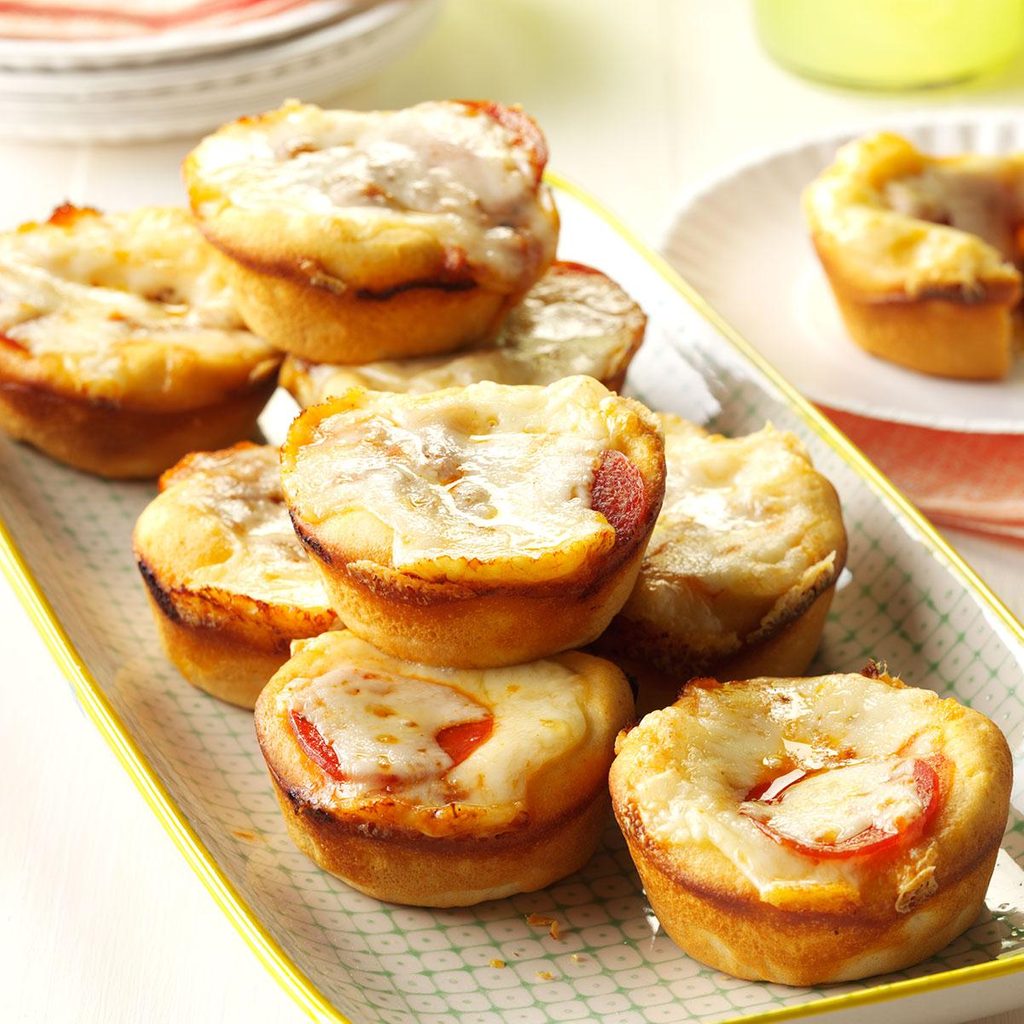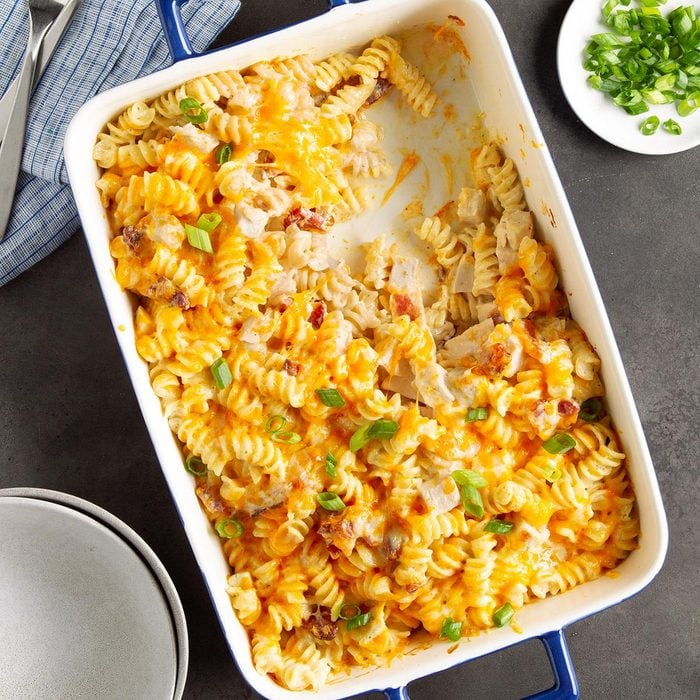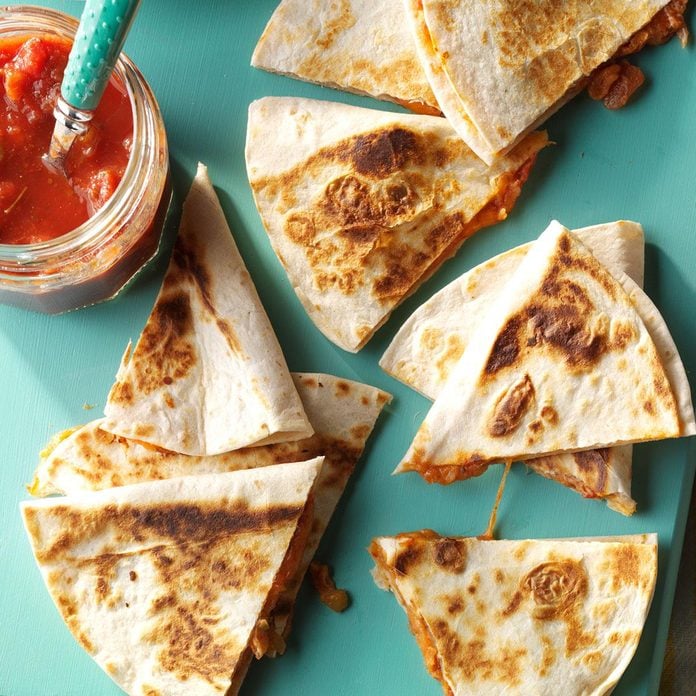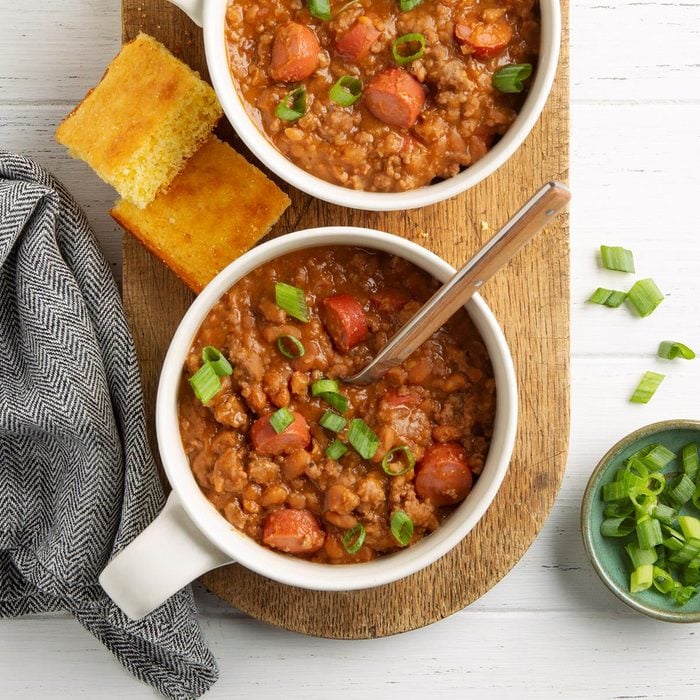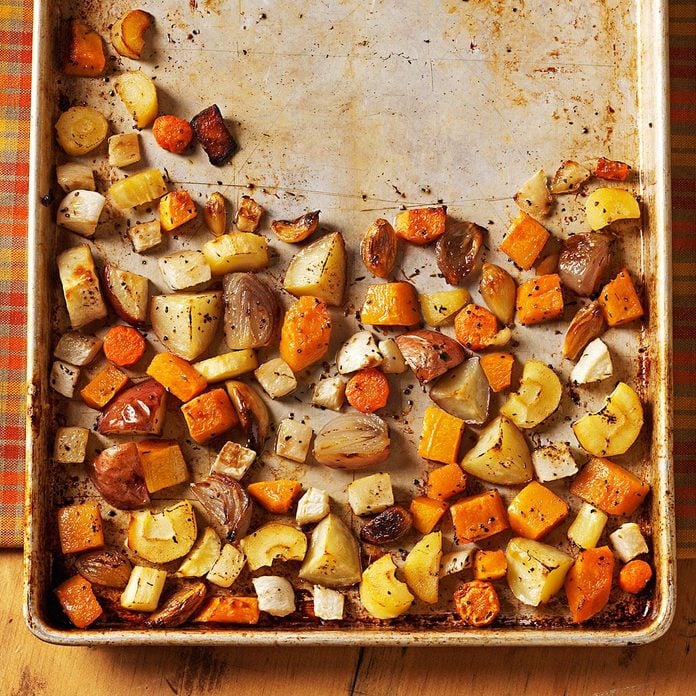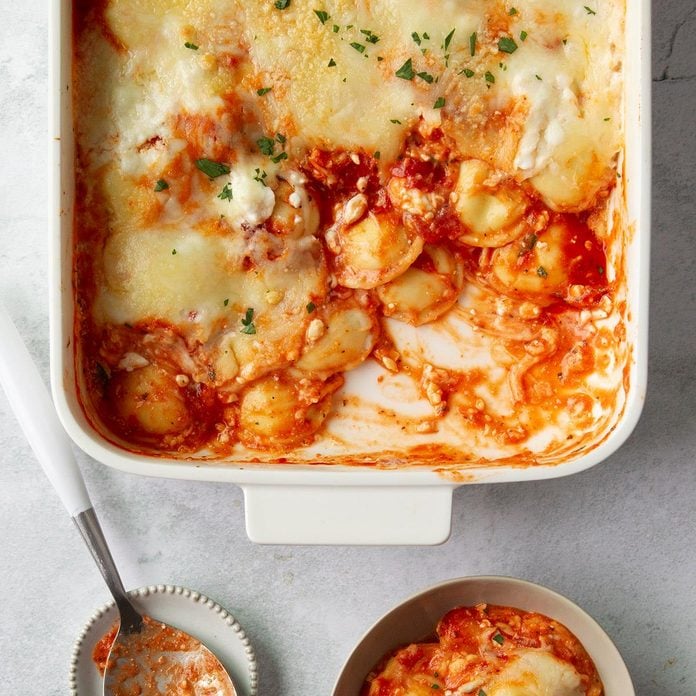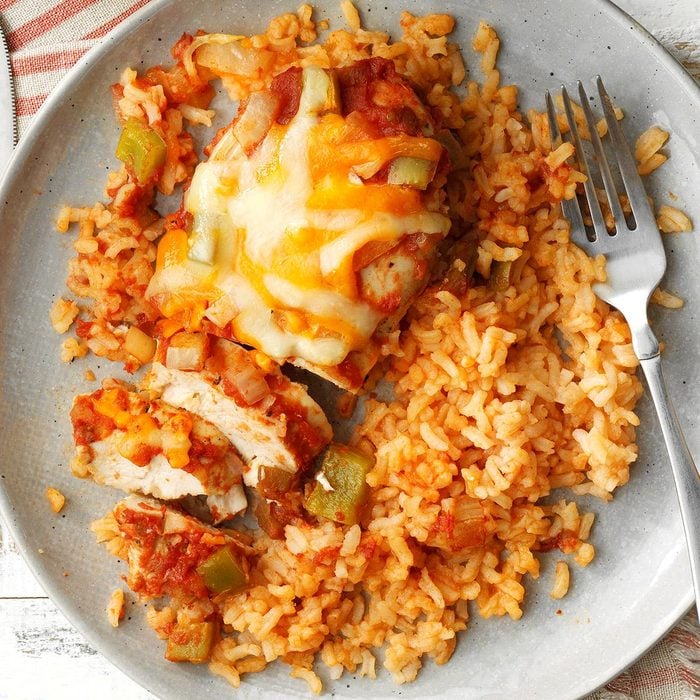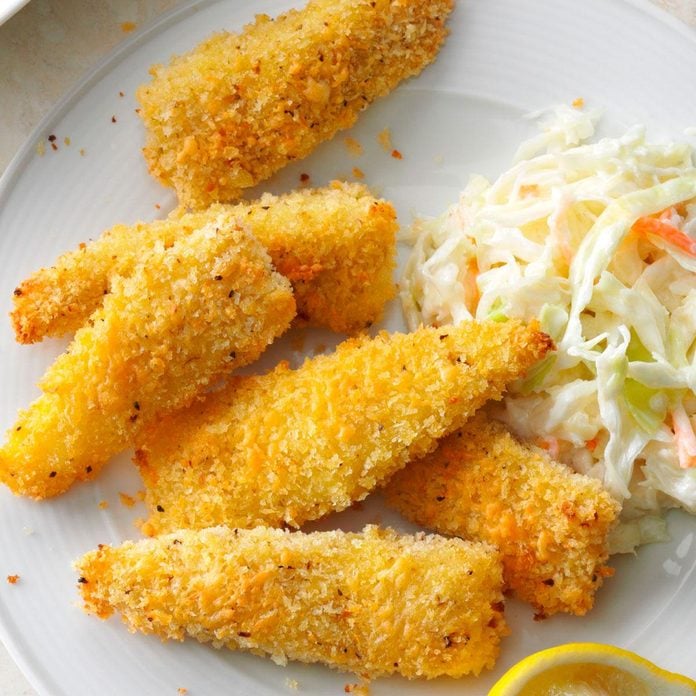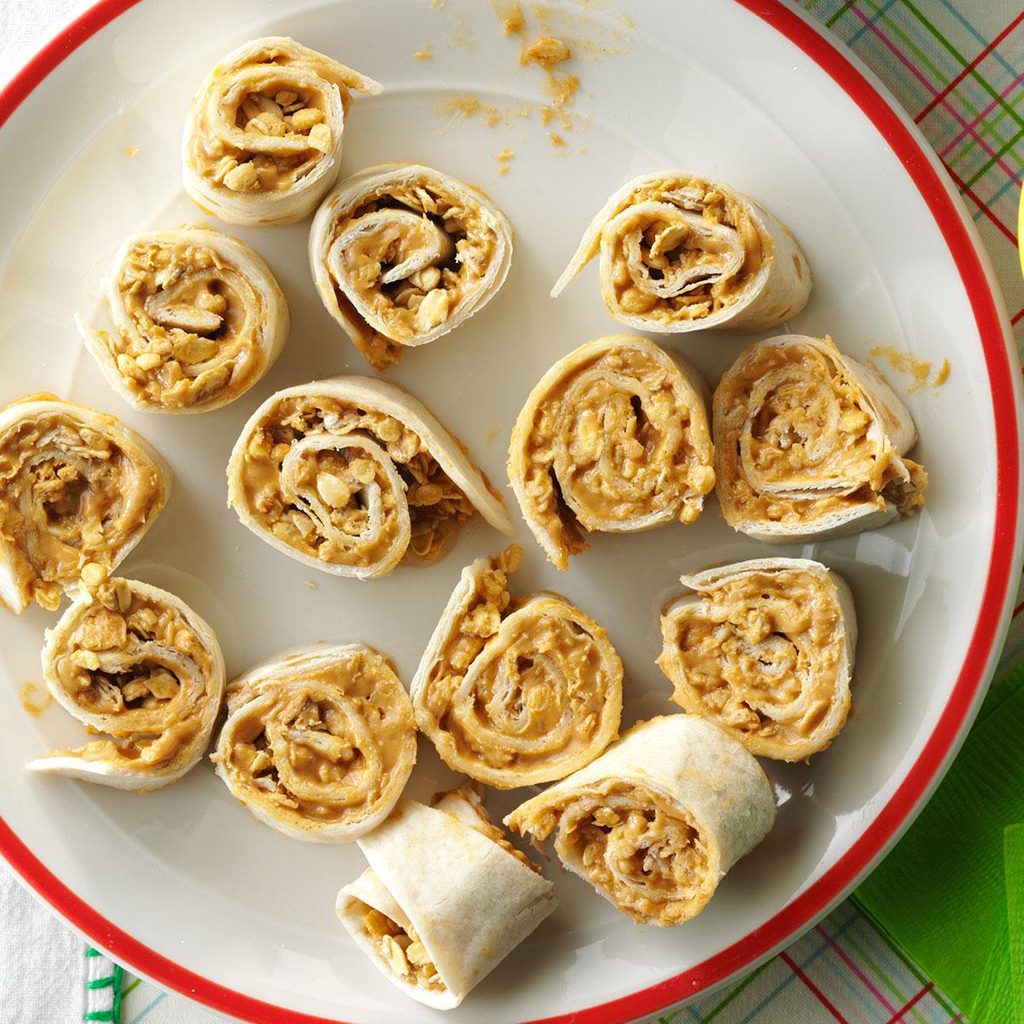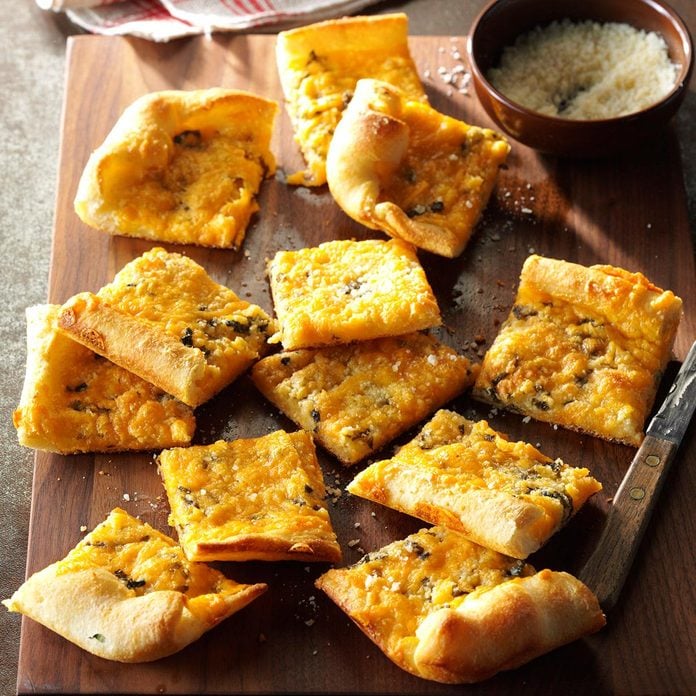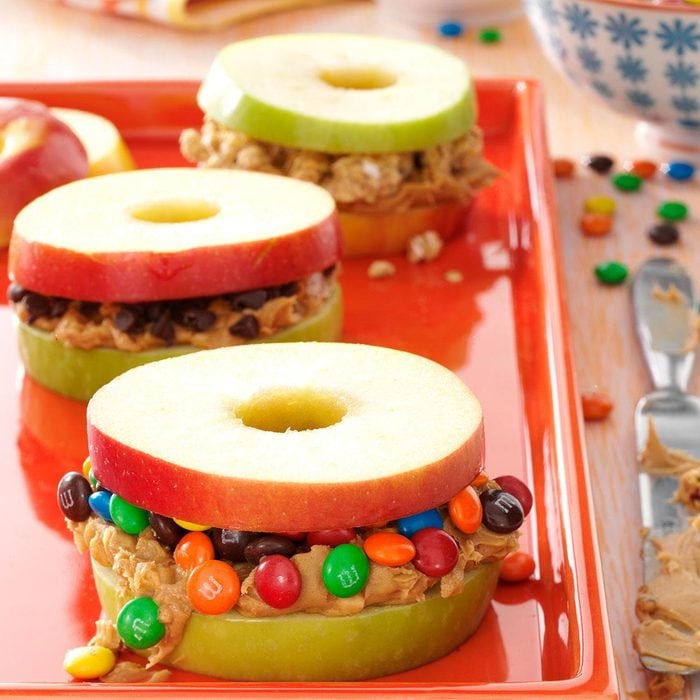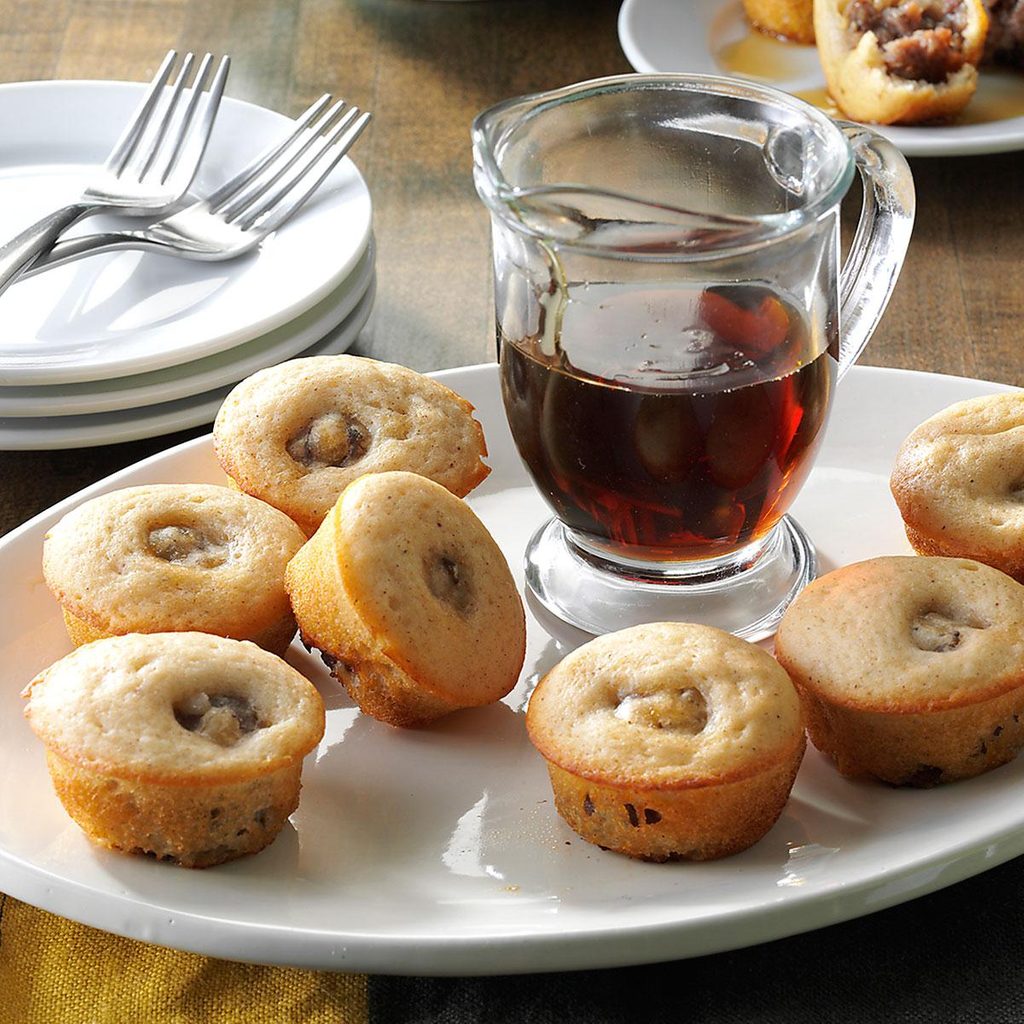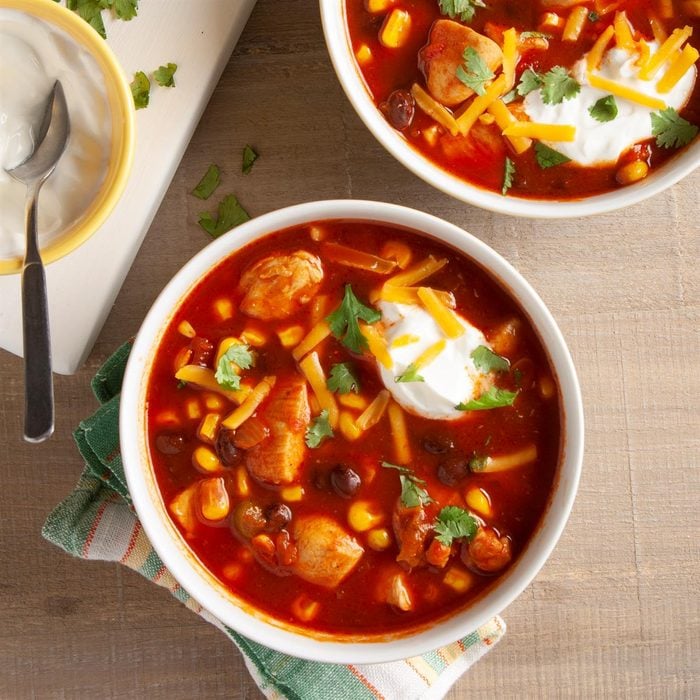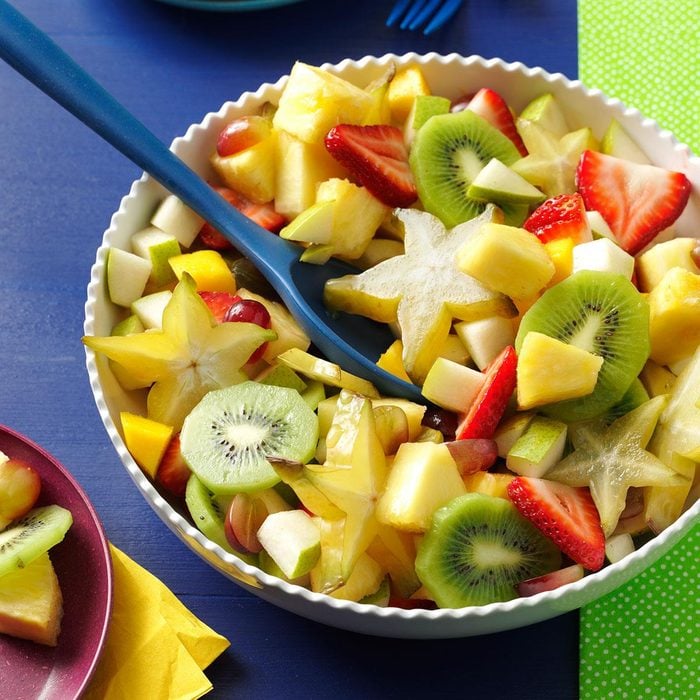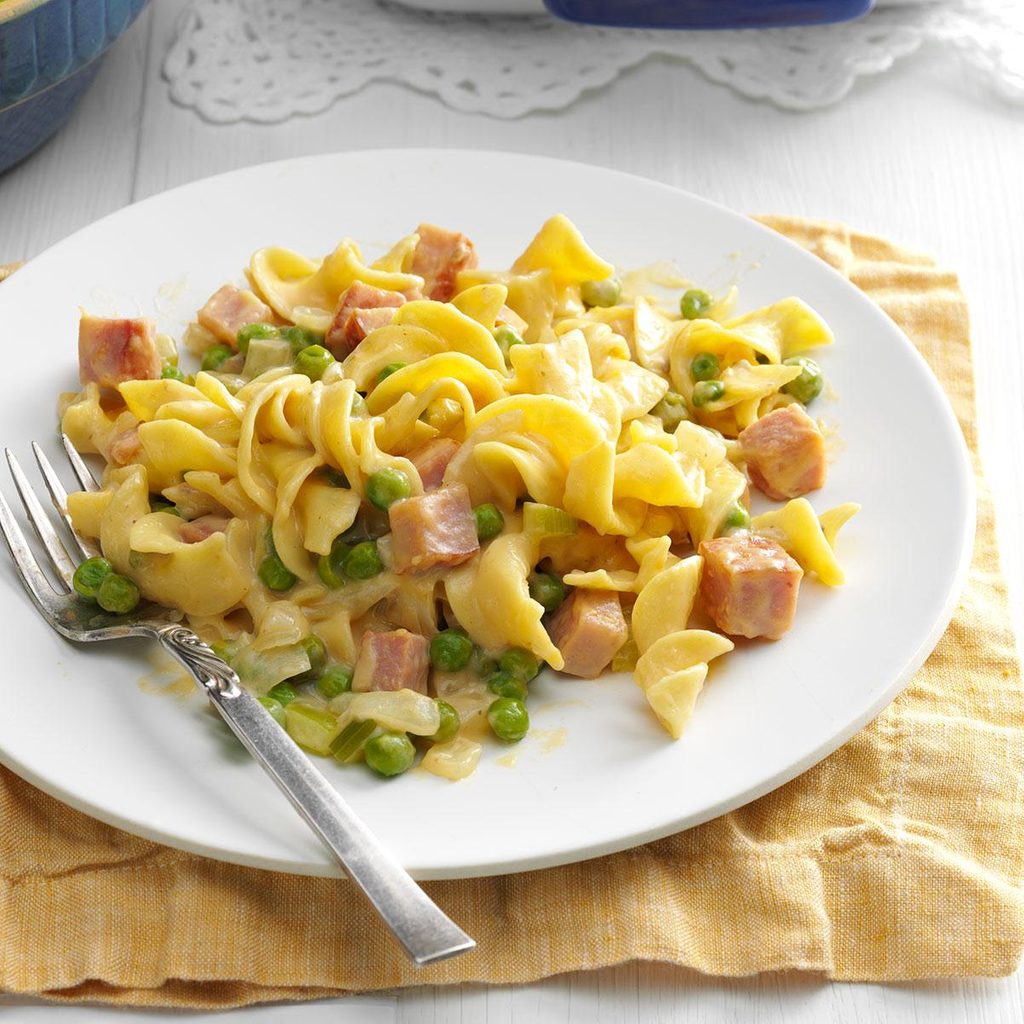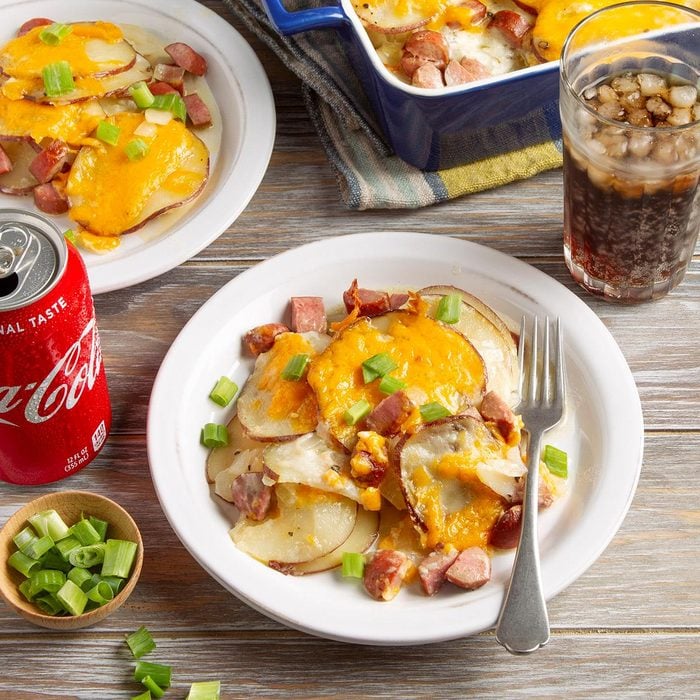When it comes to feeding their littlest ones, all parents know that mealtimes are a balancing act. Between convenience, nutrition, taste and affordability, parents face quite the task.
Here are the first foods you should and shouldn’t start your baby on.
But as a parent, you always ask yourself how you can provide your little ones with healthy, affordable meals that also won’t get spit back in your face or dribbled all over the high chair.
Well, I have a few tips for making baby food that won’t break the bank.
Check out a few of my favorite baby food recipes—all approved by my daughter.
4 Ways to Make Your Own Baby Food
Brown Rice Cereal for Babies
When you want to make your own baby food, rice is perhaps the most versatile ingredient to use. It’s inexpensive and can be made in large batches.
It’s also healthy, containing phosphorus, selenium, magnesium, vitamin B6, niacin and thiamin, just to name a few benefits (no wonder it’s a great foundation for our favorite healthy meals in a bowl!).
Rice can also be mixed with other mushy baby food to add heft to meals without sacrificing flavor. Pack in the nutrients with the best iron-rich baby foods.
Step 1: Mill
Break the rice down into a coarse powder with a food processor (here’s the best food processor according to our Test Kitchen). A blender with a milling blade will work, too.
Step 2: Cook
Cook the rice over the stove using 4 cups of water for every 1/2 cup of rice. Bring the water up to boiling, then reduce the heat to a simmer for 20 minutes.
Step 3: Serve or store
Once cooked, your brown rice will keep in the fridge up to three days or can be frozen up to a month. This is a great basic recipe and it can be easily mixed into any of the following baby-inspired dishes.
Pureed Produce for Babies
The crossroads of healthiness and low cost intersect at a catch-all baby food recipe technique for produce.
To puree food, you’ll need a food processor, blender or immersion blender. Any of these is a great investment if you plan to make baby food regularly.
By using these machines, you can quickly puree most veggies and fruits, and when you’re done making baby food, put it to use making pumpkin puree or gazpacho! Or you can make your baby leftovers with these adorable and resuable baby food pouches.
If you’re wondering what you can puree for baby, the answer is: almost anything.
Fruits like apples, pears and peaches can be added to the puree without cooking and require little or no water to thin out for the right baby food consistency.
Cooked vegetables—sweet potatoes, carrots, you name it—all work well once they’re steamed.
But let’s break this down into steps.
Step 1: Cook (if necessary)
Like I said, most fruits will not need to be cooked ahead of time, but tougher veggies should be cooked.
I think steaming is the best method because it helps the produce hold onto the most nutrients, but baking and boiling both get the job done.
I avoid the microwave since it can aggressively break down the produce, but it works if you’re in a pinch.
Step 2: Puree
Move the cooked vegetable into the blender and puree. Easy.
Step 3: Thin it out
This is not always necessary, but thinning vegetable mash makes it easier for babies, especially those around the six-month mark, when they first begin solids.
As you puree, add water slowly to create a smoother, more easily digested consistency. (You can even use the water your veggies steamed in.) Feel free to mix so it’s thicker than store-bought baby food, but don’t let it get thinner.
If the food is too watery, it can taste slimy and won’t keep as well in the fridge.
Some tips: A pinch of salt or dab of butter is useful for making green vegetables like spinach or peas more palatable. Do not use butter before your child starts dairy. Breastmilk or formula can also be added during the thinning process—the familiar taste is comforting.
You need to know these important baby food stages.
Soup for Babies
Soup is a great baby food option because it gives parents the freedom to add a variety of vegetables. I recommend using veggies that soften easily, like celery, for kids who are just starting solid foods.
Step 1: Cook
Add 2 tablespoons of uncooked pastina to 3 cups of low-sodium chicken broth. Bring to a boil and stir while cooking for 8 minutes.
Step 2: Add veggies
Celery can be added directly to the broth. Or feel free to soften carrots or small chicken squares by cooking them separately and adding after the broth boils.
Step 3: Serve or store
Serve the soup while warm. The broth and noodle mixture keeps in the fridge for three days or in the freezer up to a month.
Here’s when to give your child baby food.
Squash and Potatoes for Babies
Squash and potatoes are a fantastic flavor-packed, vitamin A-filled option for even your fussiest tyke. These ingredients create a safe go-to recipe, especially for filling hungry bellies before nap time.
This recipe works for children comfortable with chewy, solid foods and it serves as a great snack until—well, my daughter is in first grade and she still loves ’em! Here’s some of the best organic baby food to give your kiddo.
If your baby is just starting solids, you can puree the mix. And if your pantry looks a little bare, this recipe also works with just potatoes or squash. This is how to introduce your infant to baby food.
Step 1: Prep the potatoes
Cut your squash and potatoes into small cubes. Season with cinnamon and a dash of rosemary.
Step 2: Roast
Drizzle the cubes with olive oil and roast at 400 degrees for 25 minutes, or until tender and browned.
Step 3: Snacktime
Once cooled down, these are great snacks for kids who are just starting slightly more solid foods. If you’re child is still in the soft-foods-only stage, pop this recipe in the blender to smooth it out. It will keep in the refrigerator for up to five days. Need more ideas? Try all of these 6-month baby foods.
With a little extra prep and a smidge of time (during a nap?), you can have nutritious, homemade baby food that is perfect for your tiniest tots.
Be Prepared with These Recipes for Toddlers
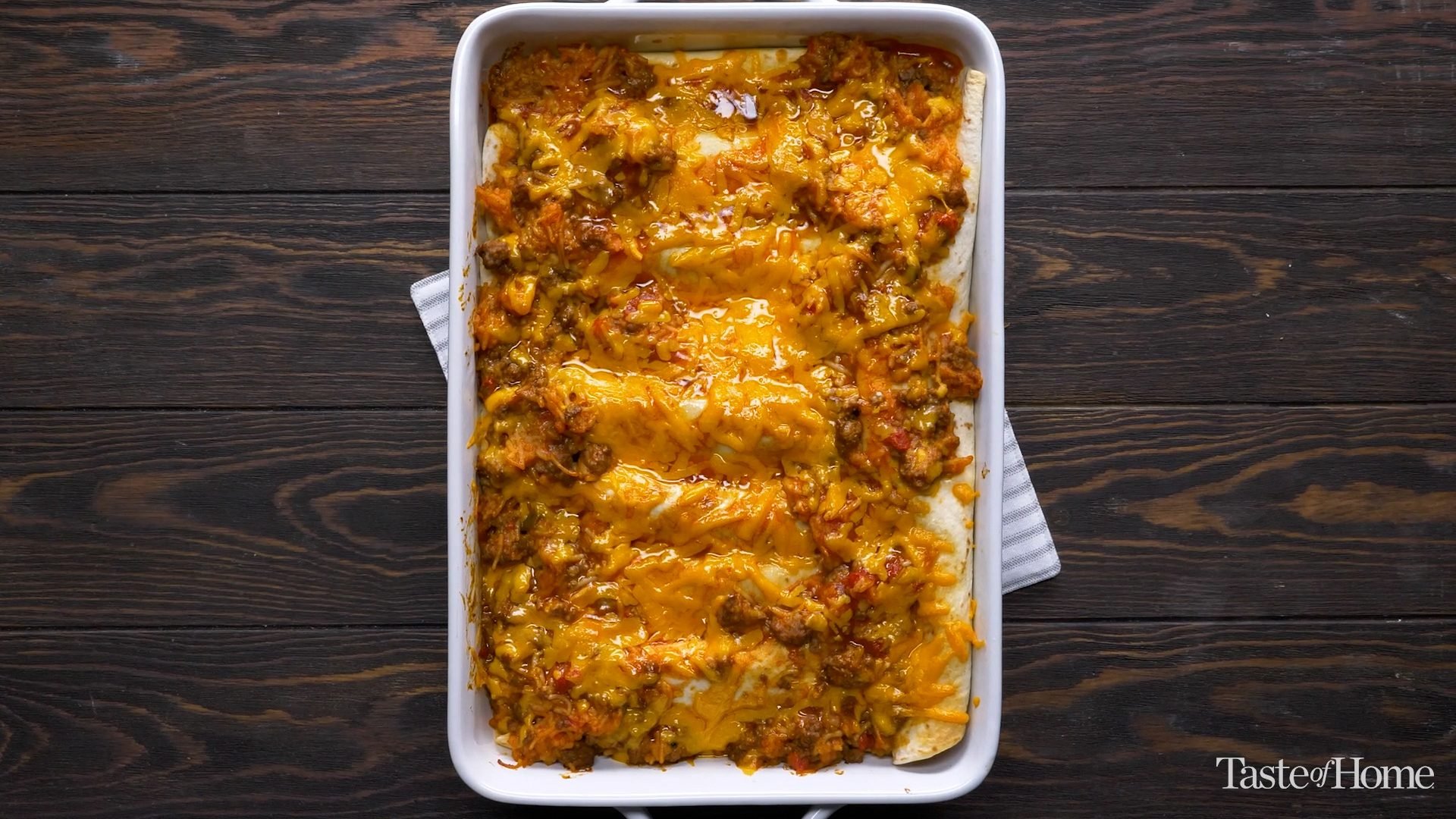 Beef ‘n’ Rice Enchiladas
Beef ‘n’ Rice Enchiladas
With a toddler in the house, I look for foods that are a snap to make. Loaded with beef, cheese and a flavorful rice mix, these enchiladas come together without a fuss. But they’re so good that guests think I spent hours in the kitchen. —Jennifer Smith, Colona, Illinois
Go to Recipe
Veggie Macaroni & CheeseThis creamy mac and cheese definitely doesn't come from a box! Fresh veggies add crunch and color and will leave everyone asking for seconds. —Marsha Morril, Harrisburg, Oregon
Weeknight Skillet Spinach PieI love sneaking extra veggies into my kids’ dinners, especially with this skillet spinach pie recipe. Because of this pie's flaky crust and extra cheese, the kids never know they’re eating a vitamin-rich dish. Plus, I’m not hovering over an oven for hours. Put the spinach and phyllo sheets in the refrigerator the night before or early in the morning for thawing. —Kristyne McDougle, Lorain, Ohio
The Ultimate Grilled CheeseThese gooey grilled cheese sandwiches taste great for lunch with sliced apples. And they're really fast to whip up, too. Here's how to make grilled cheese the right way. —Kathy Norris, Streator, Illinois
Copycat Panera Mac and CheeseMy kids and I love mac and cheese. We always get it in the bread bowls when we're at a restaurant, but with three cheeses, these white cheddar shells are filling on their own. —Steven Schend, Grand Rapids, Michigan
Scalloped Potatoes with HamThis dish is a real crowd-pleaser with its smooth sauce, chunks of ham and potato slices. I always enjoyed it when Mother made it for us. I added parsley and thyme, and now my husband and five children request it all the time. —Wendy Rhoades, Yacolt, Washington
Mini BagelizzasGarlic powder gives these speedy mini pizzas extra pizzazz. Not only are they a snap to put together, but best of all, the ingredient list is easy on your pocketbook. My husband loves them. And my toddler will soon enjoy them as an after-school treat. -Stephanie Klos-Kohr, Moline, Illinois
Swedish MeatballsMom fixed this Swedish meatball recipe for all sorts of family dinners, potluck suppers and PTA meetings. The scent of browning meat is intoxicating. Add to that the sweet smell of onions caramelizing, and everyone’s mouth starts watering. —Marybeth Mank, Mesquite, Texas
Cauliflower GratinThis is a lower-carb side dish that pairs well with pork, ham or beef. It's so creamy and delicious! If you like a bit of crunch, sprinkle buttered bread crumbs over the top for the last five minutes in the oven. — Mary Zinchiak, Boardman, Ohio
Sloppy Joe PastaSince I found this quick-to-fix recipe a few years ago, it's become a regular part of my menu plans. Everyone loves the combination of sloppy joe ingredients, shell pasta and cheddar cheese. —Lynne Leih, Idyllwild, California
Pumpkin Alfredo with ChickenI love pumpkin and my kids love pasta, so this pumpkin Alfredo recipe is a match made in heaven for us. Plus, it's an extra way to get some veggies into their diet. Use dairy-free or gluten-free ingredients if needed. —Courtney Stultz, Weir, Kansas
On-the-Go Breakfast MuffinsMy muffins are a frequent request from everyone in the family. I usually make them on Sunday nights, so when we're running late on weekday mornings, the kids can grab these to eat on the bus. —Irene Wayman, Grantsville, Utah
Pizza in a BowlOn busy days, it's a comfort to know that my family can sit down to dinner minutes after we walk in the door. Double it to wow at a potluck. This recipe works in a slow cooker, too. —Virginia Krites, Cridersville, Ohio
Over-the-Top Baked ZitiI adapted a ziti recipe to remove ingredients my kids did not like, such as ground beef. The revised recipe was a success not only with my family but at potlucks too. It's so versatile: You can use jarred sauce, double or triple the recipe, and even freeze it. —Kimberley Pitman, Smyrna, Delaware Field Editor
Chili Cheese Dog CasseroleKids and dads alike will dive right into this hearty, comforting dish. With a crispy cheese topping on a warm corn bread crust, this chili dog casserole recipe is a keeper. —Taste of Home Test Kitchen
Chocolate Chip Elvis PancakesI'm one of 13 children, so making a recipe that everyone likes can be a challenge. This chocolate peanut butter pancakes recipe was a Saturday-morning special that we all loved. —Keenan McDermott, Springfield, Missouri
Pico de Gallo Black Bean SoupEveryone at my table goes for this feel-good soup. It is quick when you’re pressed for time and beats fast food, hands down. —Darlis Wilfer, West Bend, Wisconsin
Quick Tangy Sloppy JoesI adjusted three different recipes to come up with this one. Kids like the tangy taste and request the sandwiches for birthday parties.—Anna Adams, Chatsworth, California
Chocolate-Hazelnut Fruit PizzaYou can prepare this snackable pizza in just 10 minutes! It's a fun way to sneak in those daily servings of fruit. —Dalynn Dowling, Grand Forks AFB, North Dakota
Crispy Sage Chicken TendersOne of my mom's favorite chicken recipes used fresh sage. Her version was smothered with gravy, but we like these panko-crusted tenders as they are. —Deb Perry, Traverse City, Michigan
PBJ on a StickTake the classic peanut butter and jelly sandwich on the go with these skewers. They also make easy snacks. —Sara Martin, Brookfield, Wisconsin
Slow Cooker Ranch ChickenThis is a fabulous slow-cooker ranch chicken recipe that we have passed around to all our friends, especially those who have young children. It's wonderful for a cold winter night or a hot summer day when you don't want to turn on the oven. Serve it as a weeknight family dinner or for a large group. —Sonya Stark, West Jordan, Utah
French Toast FingersKids love anything on a stick. Bite-sized French toast skewers make a fun breakfast for them to munch before heading out the door. —Mavis Diment, Marcus, Iowa
Mini Mac & Cheese BitesYoung relatives were coming for a Christmas party, so I wanted something fun for them to eat. To my surprise, it was the adults who devoured these mini mac and cheese bites. —Kate Mainiero, Elizaville, New York
Hot Dog Roll-UpsNot only do my grandchildren love these cheese-filled hot dogs, they enjoy helping put the meal together, too. It's the perfect solution when you need a last-minute lunch. —Lyletta Searle, Morgan, Utah
Corned Beef Hash and EggsSunday breakfasts have always been special in our house. It's fun to get in the kitchen and cook with the kids. No matter how many new recipes we try, they always rate this corned beef hash recipe No. 1! —Rick Skildum, Maple Grove, Minnesota
Lunch Box PizzasWhen you have these fun-to-make mini pizzas, it's no challenge finding lunch fare that the kids enjoy. Plus they pack nicely in sandwich bags and travel well, so there's no mess. —Rhonda Cliett, Belton, Texas
Chicken Bacon Ranch CasseroleThis chicken bacon ranch casserole is a dinner that both of my wonderful (but picky!) children will eat. I can easily make it ahead and then bake it right before serving. Sometimes I add 2 cups of cooked veggies, like peas or chopped broccoli, for a complete meal. —Rebekah Schultz, Mantua, New Jersey
Cheesy QuesadillasWe serve these quesadillas as chili dippers or load them up with salsa and sour cream for a super starter. —Terri Keeney, Greeley, Colorado
Cowboy StewI made up this cowboy stew in the early 1970s when I was down to very little food in the house. Because it's a combination of barbecue sauce, hamburger, hot dogs and beans, this one-skillet meal makes both children and adults happy. —Val Rananawski, Millville, New Jersey
Roasted Winter VegetablesA few simple touches and a blast of heat enhance the natural sweetness of fresh veggies. —Donna Lamano, Olathe, Kansas
Ravioli CasseroleThe whole family will love the fun, cheesy flavor of this ravioli casserole. It's like lasagna—without all the fuss! Timesaving ingredients such as prepared spaghetti sauce and frozen ravioli make it a cinch to fix. Children can help you assemble this one. —Mary Ann Rothert, Austin, Texas
Easy Arroz con PolloMy children really look forward to dinner when they know I'm serving this. Plus, it's easy to make. —Debbie Harris, Tucson, Arizona
Parmesan Fish SticksI wanted a healthier approach to fish sticks and developed a baked tilapia with a slightly peppery bite. My husband and sons love the crispy coating. —Candy Summerhill, Alexander, Arkansas
Peanut Butter Granola PinwheelsI came across this easy and tasty snack while searching online for healthy munchies for kids. Great for after school, it's really quick to make and filling enough to hold the kids until dinner. To satisfy heftier appetites or to serve as a power lunch, cut each tortilla into fewer pieces or provide one per child. The recipe is easy to increase as needed. —Mary Haluch, Ludlow, Massachusetts
Garlic-Cheese FlatbreadUnless you plan to make two, don't count on leftovers. As an appetizer or side, this cheesy flatbread will be devoured in less time than it takes to bake. And that's not long! —Suzanne Zick, Maiden, North Carolina
Apple and Peanut Butter StackersThe best way to get kids interested in cooking and eating right is to let them help. These apple and peanut butter "sandwiches" are one fun way to pique their interest and kitchen creativity. —Shirley Warren, Thiensville, Wisconsin
Pigs in a PoolMy kids love sausages and pancakes but making them during the week was out of the question. I bought the frozen variety on a stick but wasn't keen on the calories, additives or price. This version of pigs-in-a-blanket is a tasty, thrifty alternative. —Lisa Dodd, Greenville, South Carolina
Mexican-Inspired Chicken SoupThis zesty chicken taco soup is loaded with corn and black beans in a mildly spicy red broth. As a busy mom of three young children, I'm always looking for dinner recipes that can be prepared in the morning. The kids love the taste of this easy soup. —Marlene Kane, Lainesburg, Michigan
Refreshing Tropical Fruit SaladWant a family-friendly side dish? This colorful medley is kid-pleasing and a great way to encourage healthy eating. —Sharon Ricci, Spooner, Wisconsin
Ham Noodle DinnerWhether I'm cooking for company or my own brood of five children, this delicious casserole is always well-received. —Eileen Nilsson, Plymouth, Massachusetts
Hot Dog CasseroleWhen our children were small and I was busy trying to get done all those extra things that are part of a mom's normal schedule, I would make this quick hot dog casserole. Kids love it! —JoAnn Gunio, Franklin, North Carolina


